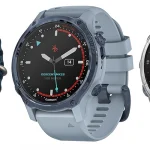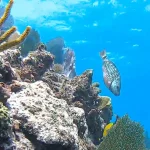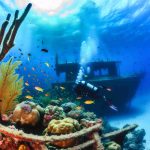Table of Contents
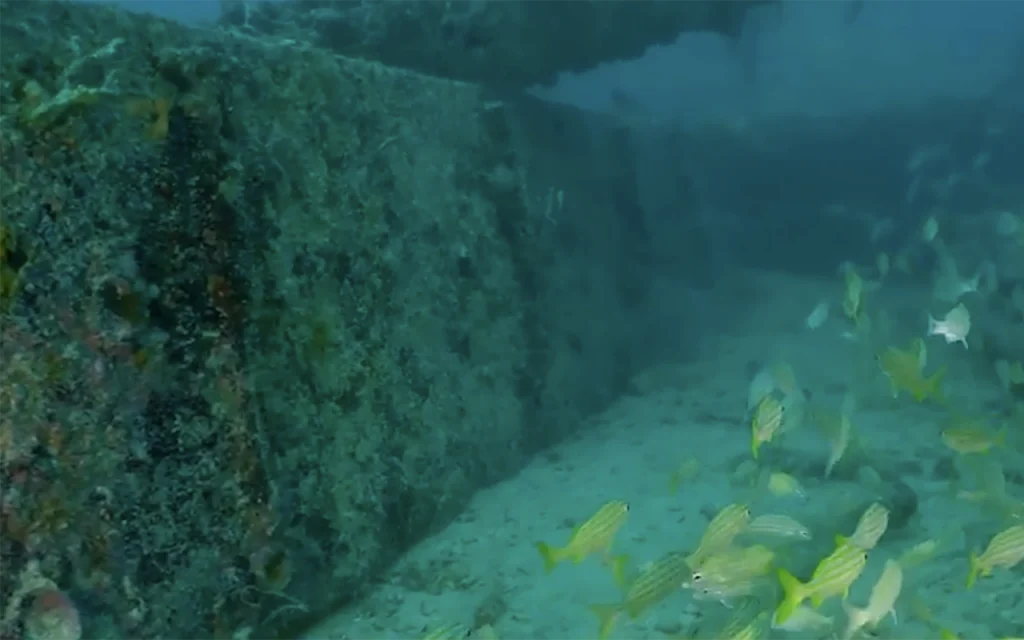
The Rebel has an interesting history, having been built in 1947 and going through several name changes before being sunk as an artificial reef in 1985. This adds to its appeal for divers interested in maritime history.
Article at a Glance
- Historical Background: The Rebel, originally named Cornelis, was constructed in 1947 in the Netherlands and was involved in drug smuggling before being seized by the U.S. Coast Guard.
- Artificial Reef: Sunk on July 16, 1985, as part of the Broward County Artificial Reef Program, the Rebel serves as a habitat for marine life and a diving attraction.
- Location and Coordinates: The wreck is situated approximately 1.35 nautical miles off the coast of Fort Lauderdale, with coordinates at Latitude 26° 10.253′ N and Longitude 80° 04.332′ W.
- Dimensions and Depth: The ship measures 128 feet in length and 24 feet in width, with the top of the wreck at 78-80 feet deep and the seafloor at around 110 feet.
- Marine Ecosystem: The wreck has become a vibrant artificial reef, attracting diverse marine life, including jacks, barracudas, and various coral species.
- Diving Conditions: As an advanced dive site, the Rebel requires divers to have proper certification and experience due to its depth and potential for strong currents.
- Safety Protocols: Divers are advised to follow strict safety measures, including pre-dive briefings, emergency preparedness, and environmental protection guidelines to ensure a safe and responsible diving experience.
Shipwreck Location Coordinates and Depth
Depth
The Rebel wreck sits at varying depths:
- The top of the wreck is at approximately 78-80 feet deep.
- The seafloor around the wreck is about 110 feet deep.
- The total relief (height) of the wreck is about 35 feet.
Location Coordinates
The Rebel wreck is located off the coast of Fort Lauderdale/Pompano Beach, Florida. Its precise coordinates are:
- Latitude: 26° 10.253′ N
- Longitude: 80° 04.332′ W
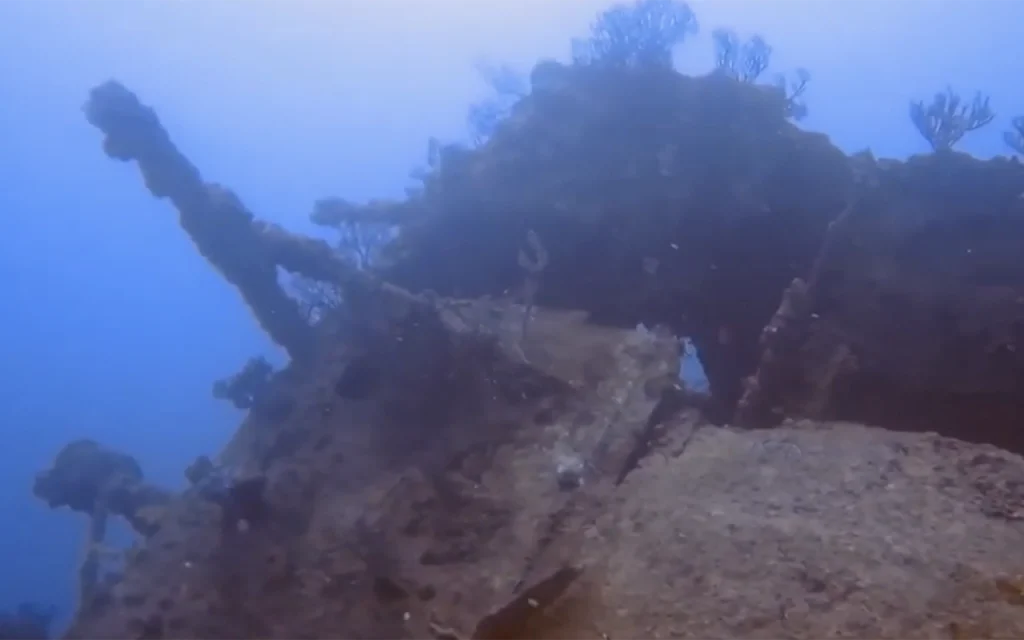
What Do Scuba Divers Say About This Ship
Dive Site Characteristics
- The Rebel is considered an advanced wreck dive due to its depth and potential for strong currents.
- It’s located off the coast of Fort Lauderdale/Pompano Beach, about 1.35 nautical miles offshore.
- The wreck sits upright with its bow pointing north.
Depth and Structure
- The top of the wreck is at approximately 78-80 feet deep, with the seafloor around 110 feet.
- The ship is 128 feet long and 24 feet wide.
- It has two open forward holds separated by a bar.
Marine Life
- The wreck attracts various marine life, including:
Diving Conditions
- There’s typically a light to moderate current, but it can become very strong during tidal movements.
- The Rebel is considered excellent for underwater photography and hunting (likely referring to spearfishing, though this should be done responsibly and in accordance with local regulations).
Dive Planning
- Some dive operators include the Rebel as part of a two-dive trip, often pairing it with a drift dive along the third reef line.
- Light penetration into the wreck is possible, but proper training and equipment are necessary for any penetration dives.
Historical Interest
The Rebel has an interesting history, having been built in 1947 and going through several name changes before being sunk as an artificial reef in 1985. This adds to its appeal for divers interested in maritime history.
What Kind of Marine Life Can Be Found on The Ship
Fish Species
- Jacks: These are frequently seen around the wreck, likely attracted by schools of smaller baitfish.
- Barracudas: Also common visitors to the wreck, hunting for prey fish.
- Groupers: Occasionally, shy groupers can be spotted slithering by the wreck.
Coral Growth
The wreckage has become encrusted with corals over time. This coral growth provides habitat and food for various marine species, contributing to the wreck’s ecosystem.
Other Marine Life
While not specifically mentioned in the search results, artificial reefs like the Rebel typically attract a diverse array of marine life. Based on similar wrecks, you might expect to find:
- Various species of tropical fish
- Crustaceans like crabs and lobsters
- Mollusks such as octopuses
- Possibly sea turtles, depending on the season
Baitfish
The presence of jacks and barracudas suggests that schools of smaller baitfish are often present around the wreck. These smaller fish are a crucial part of the wreck’s food chain.
Ecosystem Development
It’s worth noting that the Rebel was sunk in 1985, giving it nearly four decades to develop as an artificial reef. This long period has allowed for significant coral growth and the establishment of a complex marine ecosystem.
Key Information
| Category | Details |
|---|---|
| Ship Name | Rebel |
| Original Name | Cornelis |
| Construction Year | 1947 |
| Dimensions | 128 feet long, 24 feet wide |
| Location | Off the coast of Fort Lauderdale/Pompano Beach, Florida |
| Coordinates | Latitude: 26° 10.253′ N, Longitude: 80° 04.332′ W |
| Depth | Top of the wreck: 78-80 feet; Seafloor: 110 feet |
| Sinking Date | July 16, 1985 |
| History | Originally built in the Netherlands; seized by U.S. Coast Guard for drug smuggling; sunk as an artificial reef. |
| Marine Life | Jacks, barracudas, groupers, various corals, and other marine species |
| Diving Experience Level | Advanced dive due to depth and potential currents |
| Safety Measures | Certification requirements, dive planning, current awareness, emergency preparedness, and environmental considerations. |
| Dive Shop Location | Pompano Beach and Fort Lauderdale area (specific shops not listed) |
What Makes Rebel Shipwreck a Unique Diving Experience
Historical Significance
- The Rebel is a Dutch freighter originally built in 1947.
- It was intentionally sunk as an artificial reef on July 16, 1985, as part of the Broward County Artificial Reef Program.
Physical Characteristics
- The wreck is 128 feet long and 24 feet wide.
- It sits upright on the seafloor with its bow pointing north.
- The top of the wreck is at around 78-80 feet deep, while the seafloor is about 110 feet deep.
- It has two open forward holds separated by a bar.
Marine Life
- Over time, the wreck has become encrusted with corals, creating a vibrant artificial reef ecosystem.
- It attracts various marine life, including jacks, barracudas, and occasionally groupers.
Diving Conditions
- The Rebel is considered an advanced dive due to its depth and potential for strong currents.
- There’s typically a light to moderate current, but it can become very strong during tidal movements.
- The wreck offers opportunities for underwater photography and responsible fishing.
Accessibility
- Located about 1.35 nautical miles offshore from Fort Lauderdale/Pompano Beach.
- It’s often included in two-dive trips, paired with a drift dive along the third reef line.
Exploration Opportunities
- Some light penetration into the wreck is possible for properly trained and equipped divers.
- The wreck’s structure and marine life make it an interesting site for exploration and photography.
How Does The Rebel Compare to Other Shipwrecks in Florida
Age and Historical Context
- The Rebel is a relatively modern wreck, sunk intentionally in 1985 as an artificial reef.
- Many other Florida shipwrecks are much older, dating back to the Spanish colonial period (16th-18th centuries) or World War II era.
Cause of Sinking
- The Rebel was deliberately sunk as part of an artificial reef program.
- Many historic Florida wrecks resulted from natural disasters (hurricanes), navigational errors, or wartime activities (e.g., U-boat attacks in WWII).
Depth and Accessibility
- The Rebel sits at 78-110 feet deep, making it accessible to advanced recreational divers.
- Some historic wrecks in Florida are in much shallower waters, while others are in depths only suitable for technical diving.
Preservation and Artifacts
- As an intentionally sunk modern vessel, the Rebel likely has fewer historical artifacts compared to older shipwrecks.
- Many historic Florida wrecks have yielded significant treasures and artifacts, such as the Atocha discovered by Mel Fisher in 1985.
Marine Life and Ecosystem
- The Rebel has developed into an artificial reef over nearly four decades, attracting various marine life.
- Older wrecks often have more established ecosystems and may be more fully integrated into the marine environment.
Diving Experience
- The Rebel offers a relatively intact structure for exploration, with some opportunities for penetration diving.
- Historic wrecks may offer more in terms of historical significance but might be more deteriorated or scattered.
Legal Status and Accessibility
- As an artificial reef, the Rebel is likely open for diving without special permits.
- Many historic wrecks in Florida waters are protected sites, with strict regulations on visitation and artifact collection.
What is The Full History of This Ship
Origins and Early Years
- The ship’s keel was originally laid down in 1940 in the Netherlands as the Cornelis (IMO number 5080067).
- Construction was by C. Appelo’s Scheepswerven at Zwartsluis, Netherlands.
- Due to the impending German occupation during World War II, the vessel was dismantled and sunk near the shipyard before completion.
- The Cornelis was finally rebuilt and completed in 1947.
Specifications and Service
- The coastal freighter was 135.4 feet long, 23.6 feet wide, and displaced 288 tons.
- For four decades, the Cornelis sailed throughout Europe under various owners.
Name Changes and Ownership Transfers
- In 1981, the Cornelis was sold to Inversionista Nova Aborai SA. of Panama and renamed Island Transporter.
- In 1982, it was sold again to Cachontun SA and renamed Sta Andrea.
Legal Troubles and Seizure
- In 1984, the U.S. Coast Guard seized the Sta Andrea for smuggling narcotics.
- The ship was docked on the Miami River and sat idle for 10 months.
Final Years and Sinking
- On June 12, 1985, an anonymous Fort Lauderdale resident purchased the vessel at a federal auction for $17,500.
- The new owner renamed the ship Rebel and donated it to Broward County for use as an artificial reef.
- On July 16, 1985, the Broward County Sheriff’s Office Bomb and Arson Unit detonated four explosive charges to sink the Rebel.
- The ship was sunk as part of the Broward County Artificial Reef Program.
Current State
- The Rebel now rests 110 feet deep off the coast of Fort Lauderdale.
- The forward portion of the wreck, including the cargo holds, has collapsed outward onto the sand.
- The bow rests on its port side.
- The stern su
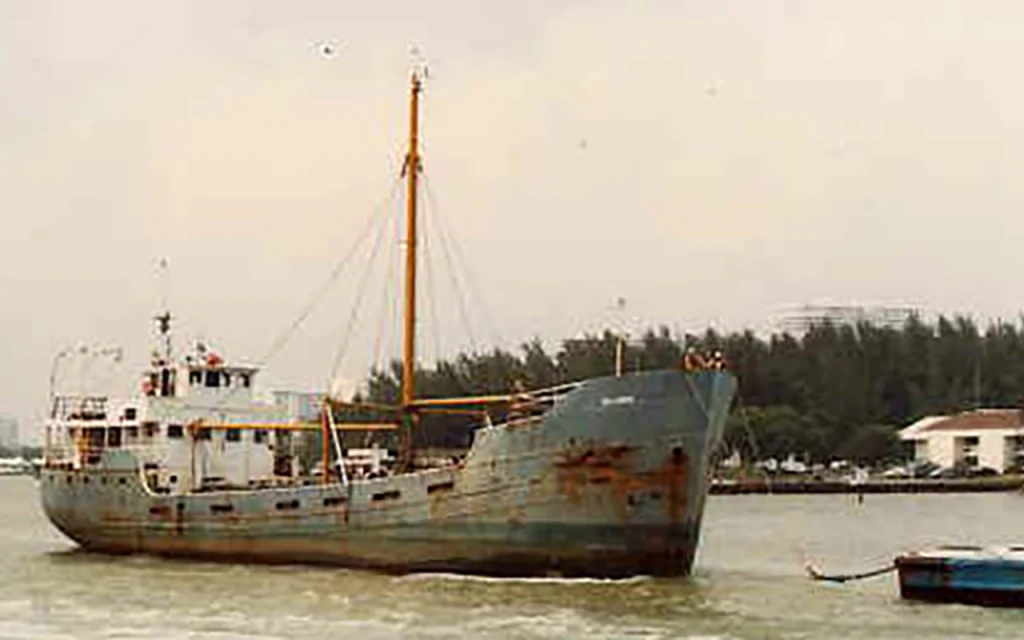
What Historical Features Can Still Be Identified on The Rebel Wreck
Structural Elements
- The wreck sits upright on the seafloor, with its bow pointing north.
- The forward portion of the wreck, including the cargo holds, has collapsed outward onto the sand.
- The bow rests on its port side.
- The stern superstructure remains upright and intact, rising over 20 feet off the bottom.
Specific Features
- Two open forward holds, separated by a bar, can likely still be identified.
- The ship’s dimensions (128 feet long and 24 feet wide) are still apparent.
Historical Context
- As a coastal freighter built in 1947, the Rebel likely retains features typical of mid-20th century cargo vessels.
- Given its history as a smuggling vessel, divers might be able to identify modifications made to conceal contraband.
Marine Growth
- After nearly four decades underwater, the wreck is encrusted with corals, which may obscure some original features but also highlight the ship’s outline.
Diving Considerations
- The wreck’s structure allows for some light penetration, suggesting that internal features may still be identifiable for properly trained divers.
- The top of the wreck at 78-80 feet and the seafloor at 110 feet are distinct features that divers can use for orientation.
What Safety Measures Are in Place for Divers Visiting the Rebel
- Certification and Experience Requirements:
- The Rebel is considered an advanced dive, so divers are likely required to have advanced open water certification or equivalent experience.
- Open water divers may only be allowed under direct supervision of an instructor.
- Depth Considerations:
- With depths ranging from 78-110 feet, dive plans must account for reduced bottom times and potential decompression requirements.
- Divers need to be trained in deep diving techniques and use appropriate equipment for these depths.
- Current Awareness:
- Divers are advised about the potential for strong currents, especially during tidal movements.
- Dive operators likely assess current conditions before allowing dives.
- Dive Planning:
- Detailed dive plans are likely required, including maximum depth, bottom time, and safety stops.
- Buddy systems are typically enforced for added safety.
- Equipment Requirements:
- Appropriate gear for deep diving, including redundant air sources, is likely mandated.
- For any wreck penetration, specialized training and equipment would be required.
- Boat Safety:
- Proper anchoring away from the wreck to avoid damage and diver entanglement.
- A dive flag is likely displayed to alert other vessels of divers in the water.
- Emergency Preparedness:
- Dive operators likely have emergency action plans in place.
- Information on the nearest coast guard station and rescue services is typically available.
- Environmental Considerations:
- Guidelines to protect the wreck and marine life are likely in place.
- Divers are typically instructed not to touch or remove anything from the wreck.
- Pre-Dive Briefings:
- Detailed briefings on wreck layout, potential hazards, and dive procedures are standard practice.
Dive Shops That Provide Diving Trips to This Shipwreck
- SCUBA Dive It
- Website: scubadiveit.com
- Offers advanced dives to the Rebel, providing detailed site information and dive plans.
- South Florida Diving Headquarters
- Website: southfloridadiving.com
- Provides dives to the Rebel, highlighting its history and marine life.
- Sea Experience
- Website: seaxp.com
- Mentions the Rebel as part of their wreck diving offerings in South Florida.
North Florida Wrecks
- USS Oriskany
- USS Massachusetts
- SS Tarpon
- SS Gulf America
- Empire Mica
- USS Chippewa
- Avocet
- Black Bart
- The Vamar
- San Pablo
- USS Narcissus
- The Loftus Wreck
- The Dorothy Louise
- The Mizpah
- MV Janet
- The Eidsvag
- YDT-14 and YDT-15
- USS Strength
- Miss Louise
- The Lulu
- PC-1174
- Three Coal Barges
- USS Accokeek (ATA-181)
- El Dorado
- The Grey Ghost
- The Pete Tide II
- Red Sea Tug

